It is a scimitar-shaped estuary that joins the Bosphorus just at the point where that strait enters the Sea of Marmara, thus forming a peninsula the tip of which is “Old Istanbul” (ancient Byzantion and Constantinople). Its Greek and English names mean the same, but the significance of the designation “golden” is obscure, while its Turkish name Haliç simply means “estuary“. It has witnessed many tumultuous historical incidents, and its dramatic vistas have been the subject of countless works of art.
The Golden Horn is a flooded prehistoric estuary. It is 7.5 kilometers long and is 750 meters across at its widest. Its maximum depth, where it flows into the Bosphorus, is about 35 meters. It is today spanned by four bridges. Moving downstream, the first is the Haliç Bridge, literally Estuary Bridge. The former Galata Bridge was damaged by a fire in 1992; it was moved to the second position in pieces, re-assembled, and restored as the Eski Galata Bridge, literally Old Galata Bridge. The third one is the Atatürk (Unkapanı) Bridge. The current Galata Bridge was completed in 1994. A fifth bridge is currently under construction to connect the subway lines of the Istanbul Metro to the north and south of the Golden Horn.
History
The Golden Horn (Keras) forms a deep natural harbor for the peninsula it encloses together with the Sea of Marmara. The Byzantine Empire had its naval headquarters there, and walls were built along the shoreline to protect the city of Constantinople from naval attacks. At the entrance to the Horn on the northern side, a large chain was pulled across from Constantinople to the old Tower of Galata to prevent unwanted ships from entering. Known among the Byzantines as the Megàlos Pyrgos (meaning “Great Tower” in Greek), this tower was largely destroyed by the Latin Crusaders during the Fourth Crusade in 1204. In 1348 the Genoese built a new tower nearby which they called Christea Turris (Tower of Christ), now called Galata Tower.
There were three notable times when the chain across the Horn was either broken or circumvented. In the 10th century the Kievan Rus’ dragged their longships out of the Bosporus, around Galata, and relaunched them in the Horn; the Byzantines defeated them with Greek fire. In 1204, during the Fourth Crusade, Venetian ships were able to break the chain with a ram. In 1453, Ottoman Sultan Mehmed II, having failed in his attempt to break the chain with brute force, instead used the same tactic as the Rus’, towing his ships across Galata over greased logs and into the estuary.
After the conquest of Constantinople in 1453, Mehmed II resettled ethnic Greeks along the Horn in the Phanar (today’s Fener). Balat continued to be inhabited by Jews, as during the Byzantine age, though many Jews decided to leave following the takeover of the city. This area was repopulated when Bayezid II invited the Jews who were expelled from Spain to resettle in Balat. Today the Golden Horn is settled on both sides, and there are parks along each shore. The Istanbul Chamber of Commerce is also located along the shore, as are Muslim, Jewish and Christian cemeteries. The Galata Bridge connects the neighborhoods of Karaköy (the ancient Galata) and Eminönü.
Until the 1980s the Horn was polluted with industrial waste, but it has since been cleaned. Today its history and beauty make it a popular tourist attraction in Istanbul.
Leonardo’s bridge
In 1502 Leonardo da Vinci produced a drawing of a single-span 240-metre (790 ft) bridge over the Golden Horn as part of a civil engineering project for Sultan Bayezid II. Leonardo’s drawings and notes regarding this bridge are currently displayed at the Museo della Scienza e della Tecnologia in Milan, Italy.
The vision of Leonardo’s Golden Horn Bridge was resurrected in 2001, when a small footbridge based on Leonardo’s design was constructed near Ås in Norway.
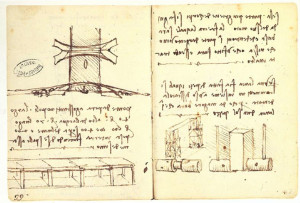
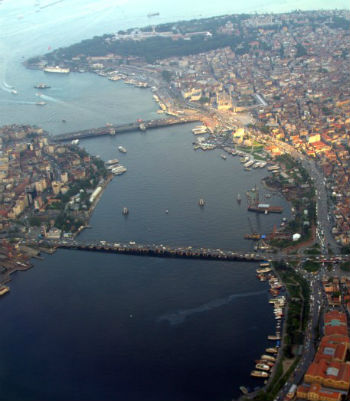
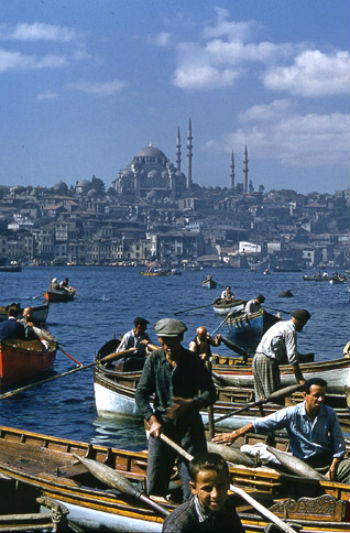
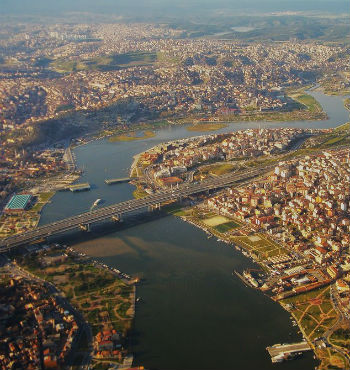
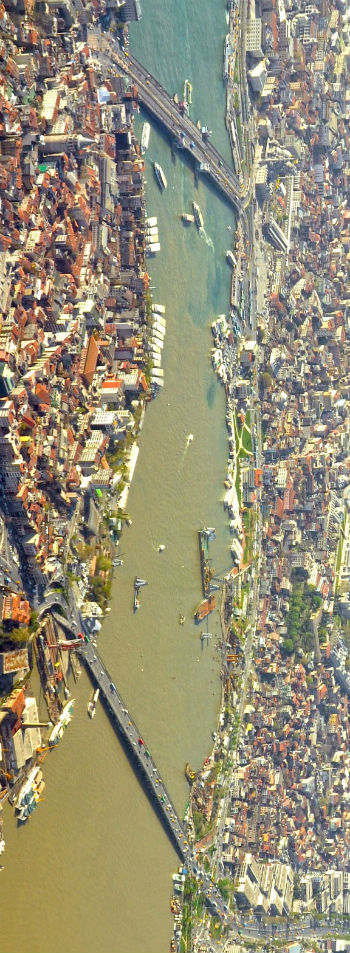


The golden horn is basically just a bay of the Marmara sea, it get´s its significance from the city around it. The traffic on it seems like a permanent rush hour and one wonders how all the boats manage to pass each other all the time.
It is the place for the ferries to the asian side and going along…
This was a short afternoon trip, which we had booked with a tour operator, and we had a guide all to ourselves. The driver dropped us at the top at Pierre Loti Hill which has a nice cafe for people to relax and enjoy the view. It was very busy on the day we visited, people can sit and relax…
This is a lovely old waterway and if the Bosporus is Istanbul's artery, the Golden Horn is its veins
Its the place where most of the cruises start, the views on the way are spectacular.. it offers you everything you expect from a boat tour.
Stunning part of Istanbul, especially when you do the cable car ride from the top, the view vantage points are just spot on
We walked across the Galata Bridge which was fun. Fishermen on the bridge, fish restaurants underneath and a fish market on the New Istanbul side. Took the tram up the Galata Hil. This is more the trendy side with wide avenues, fancy stores, etc.
There is so much history and I felt like they barely skimmed the surface.
A must see as part of your bosphorus cruise. Eminonu is the cheapeat cruise at it is the offical…
This is a place and while you can do things on and near it, it isn't an attraction in the sense of most on this list. It is a busy place. There is a lot of commercial use of the waterway. There are those who commute across it on ferries and see daily what we tourists pay to enjoy.
Absolutely Beautiful. You must experience the Golden Horn by Boat ride. The water looks clean and the views around the Golden Horn are magnificent.